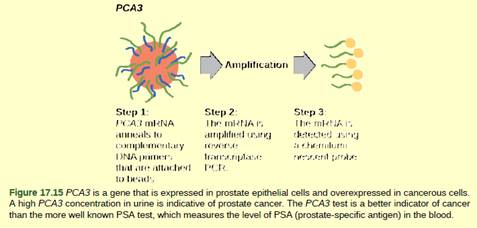
Figure 17.15 In 2011, the United States Preventative Services Task Force recommended against using the PSA test to screen healthy men for prostate cancer. Their recommendation is based on evidence that screening does not reduce the risk of death from prostate cancer. Prostate cancer often develops very slowly and does not cause problems, while the cancer treatment can have severe side effects. The PCA3 test is considered to be more accurate, but screening may still result in men who would not have been harmed by the cancer itself suffering side effects from treatment. What do you think? Should all healthy men be screened for prostate cancer using the PCA3 or PSA test? Should people in general be screened to find out if they have a genetic risk for cancer or other diseases?

Want to see the full answer?
Check out a sample textbook solution
Chapter 17 Solutions
Biology 2e
Additional Science Textbook Solutions
College Physics
Microbiology with Diseases by Body System (4th Edition)
Concepts of Genetics (12th Edition)
Microbiology: An Introduction (13th Edition)
Human Anatomy & Physiology (2nd Edition)
Genetic Analysis: An Integrated Approach (3rd Edition)
- Studies have shown that there are significant differences in cancer rates among different ethnic groups. For example, the Japanese have very high rates of colon cancer but very low rates of breast cancer. It has also been demonstrated that when members of low-risk ethnic groups move to high-risk areas, their cancer risks rise to those of the high-risk area. For example, Japanese who live in the United States, where the risk of breast cancer is high, have higher rates of breast cancer than do Japanese who live in Japan. What are some of the possible explanations for this phenomenon? What factors may explain why the Japanese have higher rates of colon cancer than do other ethnic groups?arrow_forwardBenign tumors: a. are noncancerous growths that do not spread to other tissues b. do not contain mutations c. are malignant and clonal in origin d. metastasize to other tissues e. none of thesearrow_forwardIf improved diagnostic tests are developed from this project, is the effort worth it if the cancers diagnosed have no treatment available?arrow_forward
- Which of the following statements describing mutations causing cancer is false? Group of answer choices They are mostly inherited mutations They are common in cells that are highly regulated by hormones They can be induced by infectious agentsarrow_forwardTopic/Subject: Research and Evidence-Based Practice Create an informed consent using the PICO question below: How does a cancer patient feel about undergoing surgery rather than chemotherapy for faster treatment of the disease?arrow_forwardHow can genetic testing help in cancer diagnosis? Answer specificallyarrow_forward
- Draw a diagram of how we can treatment the Cancer by using gene therapy? Please draw at your own hands.arrow_forwardIn the video, Cancer Warrior, all of the following experimental models were used EXCEPT: a. Chick embryo b. Bone marrow metastasis model c.Mouse tumors and lung metastases d.Rabbit cornea modelarrow_forwardWhich of the following is an application of gene chips? Expression profiling. SNP detection. Tumor classification and analysis. All of these answer choices are correct. Detecting chromosomal abnormalities.arrow_forward
- Gene therapy (or cell therapy) is the name of a newer type of cancer treatment. Describe an example of how it works, and why it is different from conventional treatments.arrow_forwardA graduate student who has not taken BIOL 519 thinks they have discovered a new oncogene that could cause breast cancer. The student transfects cells with this oncogene and finds that the cells proliferate uncontrollably. The student next designs a PCR assay that will detect the presence of the oncogene in cancerous breast tissue. The student sets up the assay and analyzes the presence of the oncogene in normal and tumor issue samples (See data below). The student is disappointed to see that the potential oncogene is present at similar levels in both the normal and tumor tissue. Therefore, the student concludes that this gene is not an oncogene. Do you agree with this conclusion? Justify your answer (5-6 senetences max).arrow_forwardScenario A: Mrs. Berk is 65 and has terminal cancer. The nurse tells you the doctor has told Mrs. Berk and her family that further treatment will not stop the cancer. You have cared for Mrs. Berk during several hospital stays and are assigned to give her care today. When you go to her room, she tells you that she will be happy if she can live just long enough to see her grandson graduate from high school in the spring. Later when you go to her room, she is crying and says she does not understand why this is happening to her. 1. What personal beliefs about death would help you to care for a person who is terminally ill? What beliefs would make it more difficult? 2. What would you say to Mrs. Berk when she talks about her prognosis? How would this conversation make you feel? 3. What effect would her present condition have on the time you spend in Mrs. Berk’s room? Do you think you would want to spend more or less time with her? Why? 4. What stage or stages of grief does Mrs. Berk…arrow_forward
 Biology 2eBiologyISBN:9781947172517Author:Matthew Douglas, Jung Choi, Mary Ann ClarkPublisher:OpenStax
Biology 2eBiologyISBN:9781947172517Author:Matthew Douglas, Jung Choi, Mary Ann ClarkPublisher:OpenStax Human Heredity: Principles and Issues (MindTap Co...BiologyISBN:9781305251052Author:Michael CummingsPublisher:Cengage Learning
Human Heredity: Principles and Issues (MindTap Co...BiologyISBN:9781305251052Author:Michael CummingsPublisher:Cengage Learning Human Biology (MindTap Course List)BiologyISBN:9781305112100Author:Cecie Starr, Beverly McMillanPublisher:Cengage Learning
Human Biology (MindTap Course List)BiologyISBN:9781305112100Author:Cecie Starr, Beverly McMillanPublisher:Cengage Learning Biology: The Unity and Diversity of Life (MindTap...BiologyISBN:9781305073951Author:Cecie Starr, Ralph Taggart, Christine Evers, Lisa StarrPublisher:Cengage Learning
Biology: The Unity and Diversity of Life (MindTap...BiologyISBN:9781305073951Author:Cecie Starr, Ralph Taggart, Christine Evers, Lisa StarrPublisher:Cengage Learning





